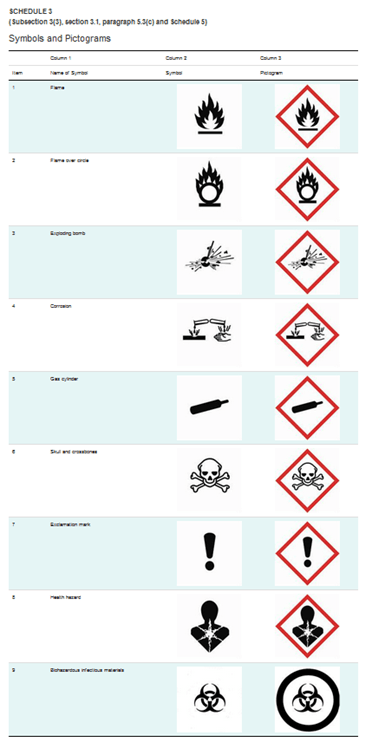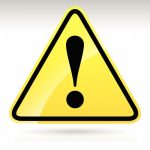WHMIS – How many symbols do I really need?
By: Sarah D’Mello B.SC.,SENIOR PRODUCT SAFETY SPECIALIST
The Workplace Hazardous Materials Information System or WHMIS, is Canada’s hazard communication standard for classifying chemicals and communicating their potential hazards and is aligned with the Globally Harmonized System of Classification and Labelling of Chemicals (GHS). A key component of WHMIS are the symbols that immediately show the user of a hazardous product what type of hazard is present. These symbols are called ‘pictograms’.
But how many symbols do you need in order for your product to be compliant?
Read here until the end for our Product Safety team’s expert advice. But first, why are WHMIS symbols and meanings important?
Why are WHMIS symbols important?
WHMIS symbols are graphic images that provide a standardized, quick reference for the safe handling of hazardous products. WHMIS places responsibilities on both suppliers and employers to mitigate the potential hazards.
Examples of WHMIS symbols
Some examples of WHMIS 2015 symbols are:
- Flammable pictogram
- health hazard pictogram
- exploding bomb pictogram
- skull and crossbones pictogram
- exclamation mark pictogram
Most pictograms consist of a symbol on a white background framed within a red border. The symbol within the border represents the potential hazard (fire, explosion, health, etc.). Pictograms are assigned to specific hazard classes or categories. A product can be assigned more than one pictogram depending on its hazard identification.
How Many Symbols
When the Dell Tech product safety team are working on a GHS WHMIS Safety Data Sheet (SDS), we provide an SDS that complies with the current Hazardous Products Regulations (HPR). Schedule 3 of the regulations contains the mandated WHMIS symbols and pictograms that must be on a Canadian SDS. Please follow this link to the appropriate symbols and ensure that you are using these for Canada.
What is often overlooked is that in some cases a pictogram may be omitted. Part 3 of the HPR describes under specific circumstances they do not apply.
SKULL AND CROSSBONES SYMBOL: When there is a requirement to provide the skull and crossbones symbol, the requirement to provide the exclamation mark to indicate ACUTE TOXICITY does not apply. If you need the exclamation point for a classification other than acute toxicity, then you still require both.
CORROSION SYMBOL: When there is a requirement to provide the corrosion symbol, any requirement to provide the exclamation symbol to indicate SKIN OR EYE IRRITATION does not apply. If the exclamation point for a classification other than skin or eye irritation is required, you still need both.
HEALTH HAZARD SYMBOL: When there is the requirement to provide the health hazard symbol to indicate respiratory sensitization, any requirement to provide the exclamation symbol to indicate SKIN SENSITIZATION, SKIN OR EYE IRRITATION does not apply. If the exclamation point for a classification other than the aforementioned, you will require both.
These are the ONLY EXEMPTIONS that exist in Canada for the removal of a symbol.
How Dell Tech Can Help with WHMIS Symbols and Meanings
Dell Tech can help you understand the current requirements under the Hazardous Products Regulations (HPR). We will provide you with a compliant GHS WHMIS SDS and label that display the appropriate symbol(s). Contact Dell Tech if you have any questions regarding WHMIS pictograms or for further information on how we can help you meet your label compliance under GHS (Globally Harmonized System).
Dell Tech has provided professional, confidential consulting services to the specialty chemical
industry in Canada, the USA, Europe, and Asia for the last 40 years.
Contact us today for more information.






